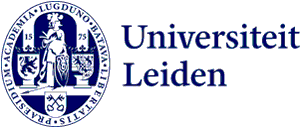
From wildlife journalist to ecologist: PhD candidate researching light and noise pollution
Ecologist Sebastiaan Grosscurt became a successful wildlife journalist after graduating. But he decided to focus on science instead. He started his PhD research this year on the cumulative effect of light and noise pollution on animal behaviour.
Lights on all night, data centres humming round the clock: noise and light pollution is a common problem in urban environments. It is no secret that it can affect people and animals. But we do not know whether the two combined have a greater effect on animal behaviour. Sebastiaan Grosscurt has therefore started his research on sensory multistress in urban animals (see below).
‘Whether an animal can adapt to its new surroundings is of scientific interest because it says something about their flexibility’, says Grosscurt. ‘And the question is of interest to conservation too. Suppose we install bright street lights for visitor safety in a nature reserve, this may make it less ideal as a nature reserve. Our research findings should help us design cities and other areas to make them a less harmful habitat for animals.’
A love of nature was instilled in Grosscurt from a young age. ‘We used to go camping as a family on Terschelling every summer. There’s fantastic walks and cycling on the island. As a child I always brought my binoculars and bird guide with me. Or I’d chase after bumblebees and butterflies to see what species they were.’
What is sensory multistress?
Sensory multistress is the cumulative effect of pollution caused by light, noise, odour or other sensory experiences, in this research on non-human animals. We have known for decades that noise and light pollution affect animals but do not know the effect of the two combined. ‘A city is a mixture of factors that we chuck at animals’, Grosscurt explains. ‘In science you always begin by compartmentalising: you research the effect of one variable. Only when you know that, can you start measuring the effect of different types of pollution together on urban animals.’
Solutions to global problems
His interest led him to do the Earth, Energy & Sustainability specialisation of the Liberal Arts and Sciences programme at Leiden University College in The Hague. ‘An interdisciplinary programme that often combines disciplines to help solve global problems’, says Grosscurt. ‘Large-scale systems thinking appealed to me.’ He continued his studies with a Master’s in Forest and Nature Conservation in Wageningen. Despite going on to forge a successful career as a wildlife journalist, he returned to Leiden for his PhD. ‘I was a full-time journalist for a year’, he says. ‘And what I liked most was a big research project with fellow journalists. I was good at digging deep: I could make solid statistics-based claims. I thought I PhD would be too dry for me but decided to go for it anyway. It was definitely the right decision.’
From the field to the office
Grosscurt has finished his first fieldwork experiment. ‘I placed microphones next to coot nests in nine cities, at sites with varying amounts of light and noise’, he explains. ‘I recorded all coot noises for a week. This should show whether their day or night rhythms change as light and noise levels do. Thousands of hours of audio material now need to be analysed. There’s no way you can do that alone. Luckily, this is exactly what machine learning was made for. As part of the research I am going to build a model to do the analysis. I’ve got some knowledge of programming. I wonder whether it will be as easy as I think.’
‘The more data about nature, the better’
This is causing the work of an ecologist to move away from the outdoors and into the office. ‘The more data about nature, the better’, he says. ‘So we hope to get people interested in providing data. Another benefit is that it will increase their sense of involvement in nature. In the summer I lead excursions to the Wadden, the largest intertidal area in the world. It’s a unique natural park but tourists often see it as one big mud pie. Once they see all that is living there during one of these excursions, they begin to appreciate it more. If citizen science projects make more people realise how much beautiful nature has already been lost, they will do more to conserve what we still have.’
Text: Wilke Martens
Photo: Taco van der Eb
This article can also be read in our Leidraad alumni magazine (in Dutch).
